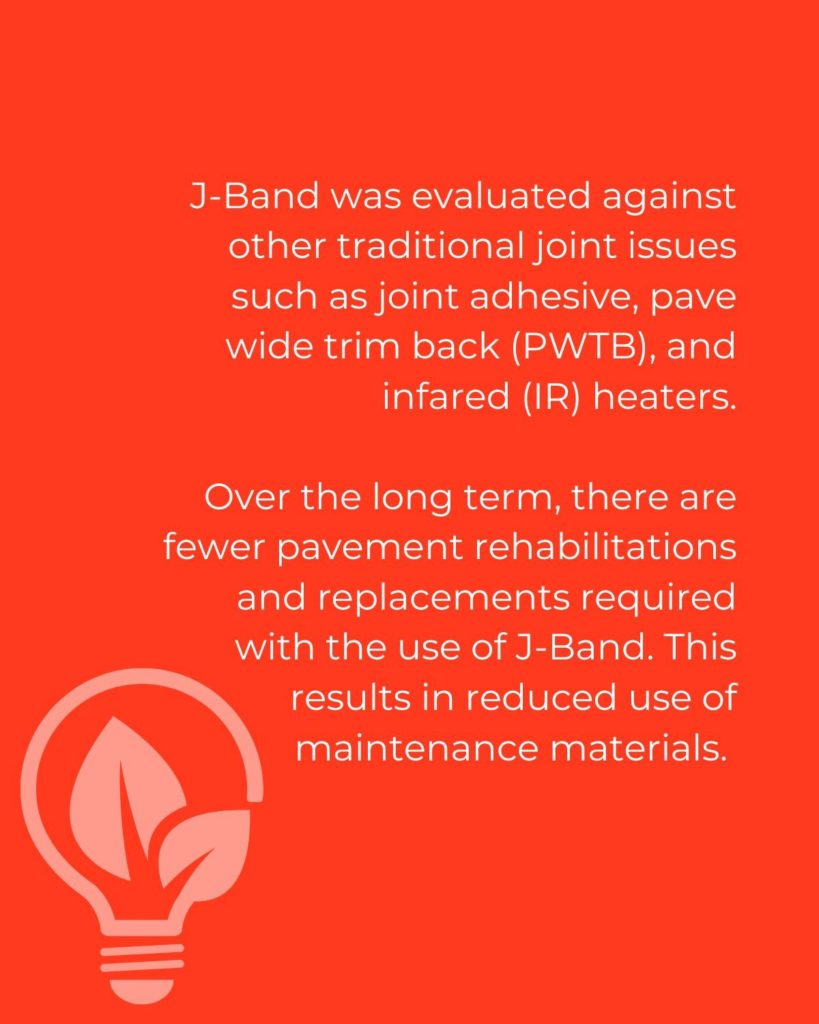Projects utilizing innovative technologies are frequently built with both a test and a control section to understand how that technology performs. Our teams have been involved in several test and control projects across the country to help us and our partners understand the long-term gains J-Band® can have on a road’s performance.
On November 28, 2022, we reviewed a VRAM (Void Reducing Asphalt Membrane) project constructed in the Fall of 2017 on US-6 in Henry County, Ohio running through the town of McClure. We have been reviewing this project since the Spring of 2018. The prime contractor on this project was Gerken Materials Inc. and their subcontractor Specialized Construction Inc. (SCI) applied the VRAM. The Surface Course for this project was an ODOT 12.5mm Type A 446 installed at 1 ½” thick and in the Test Section, the VRAM was applied on the centerline at 15” wide at 1.22 lb./ft. directly under the HMA where the cold centerline longitudinal pavement joint was to be made. No VRAM was applied in the Control Section.
Project Observations of the VRAM Test Section
As mentioned above this project has been reviewed annually since 2018. Both the control and test sections have been monitored for crack propagation along with crack width and if any maintenance work has been done to these areas. Currently, the VRAM Test Section is showing only 10% cracking in the total length of just under four miles. The crack width is a hairline to 1/8” wide. Some of this cracking has been sealed.
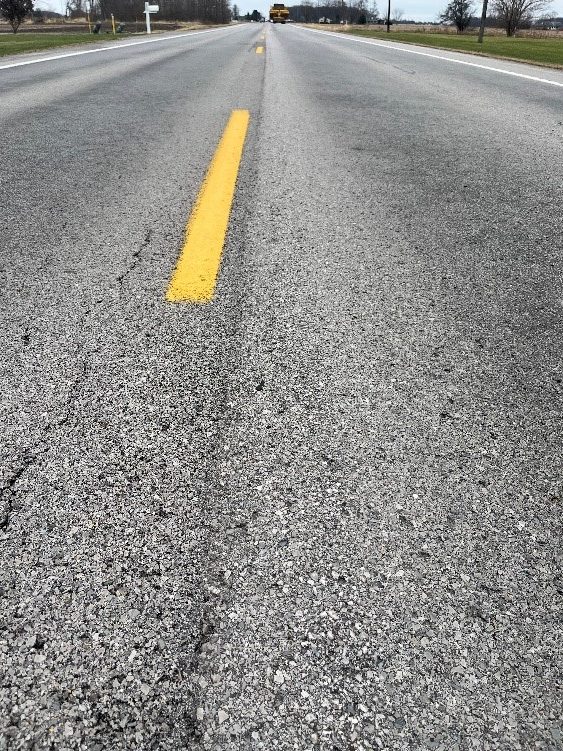
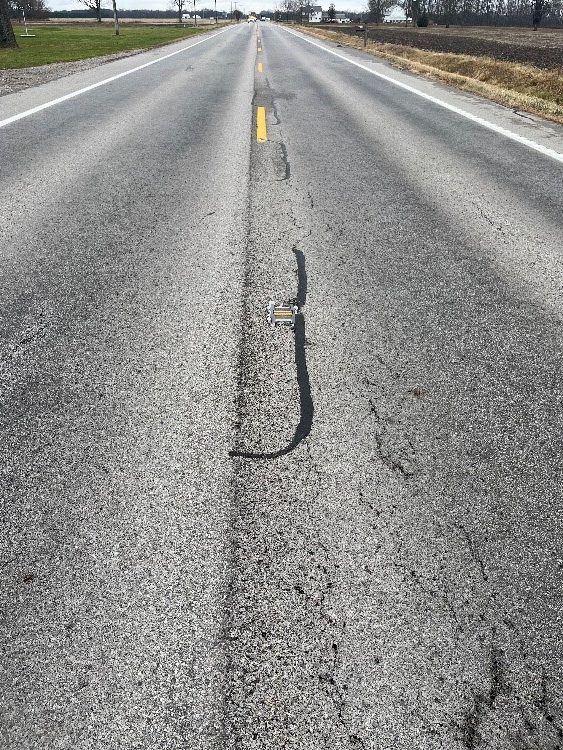
Project Observations of the Control Section (without VRAM)
The control section of the project exhibits considerable cracking just five years after paving. 100% of the longitudinal centerline joint has cracked to a ½” width. All this five-mile section has been crack sealed. There is also evidence of parallel longitudinal cracks developing next to the sealed centerline joint.
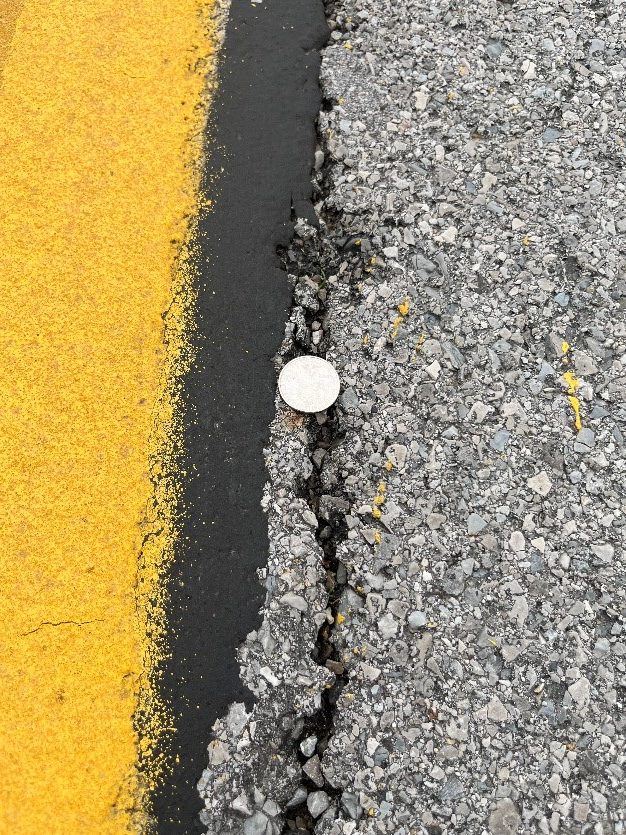
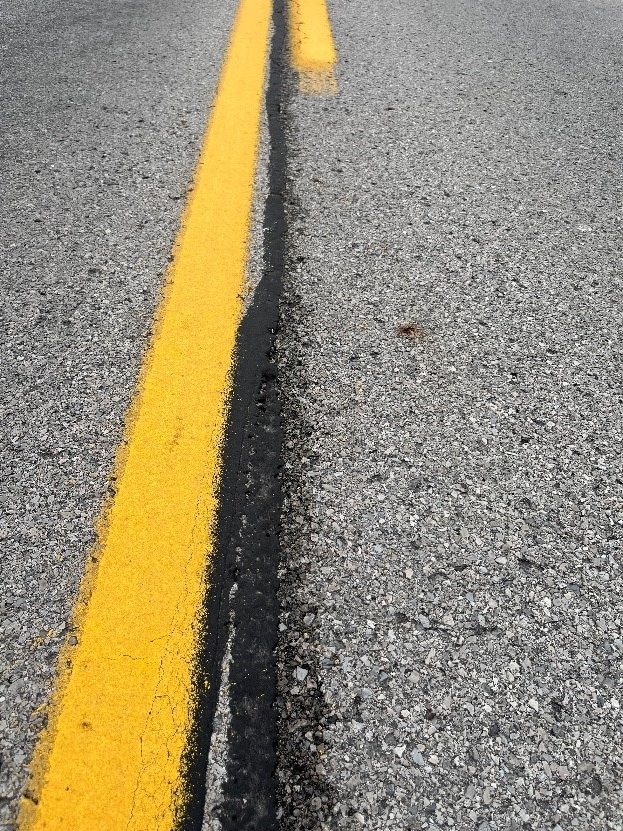
One may conclude that the VRAM test section is performing as expected by decreasing the chances for water and air intrusion into the HMA (Hot Mix Asphalt) longitudinal joint and is increasing the life cycle cost of this roadway by delaying the need for a large crack sealing event. Whereas the control section without VRAM is already showing parallel cracking which may soon turn into alligator cracking and “pop-outs” necessitating even more maintenance.
J-Band®
Discovered and developed with state transportation agencies, J-Band represents a breakthrough in preserving pavement. A product of the industry experts at Asphalt Materials, Inc., J-Band is created in the leading- edge laboratories of Heritage Research Group. It represents decades of work that resulted in a proven, innovative solution.
Explore our interactive map to see many different projects that have utilized VRAM at the time of construction. You can also read the various project and control stories regarding VRAM here to find out more about how longer- lasting roads save money, time, and lives.
Editors Notes
Centerline and longitudinal joints are often used interchangeably in describing the pavement area where two paved sections come together.
In Illinois, VRAM, Void Reducing Asphalt Membrane is referred to as LJS, Longitudinal Joint Sealant.
Depending on the situation VRAM can be sprayed at different widths. It should be noted that 18” is a typical application width for centerline applications.
J-Band® is a VRAM product of Asphalt Materials, Inc. that was created in the labs of The Heritage Research Group.
J-Band®, CCAP® and T-Bond® are registered trademarks of Asphalt Materials, Inc.
AMIBIND™, AMIBOND™, AMICYCLE™, AMIGUARD™ and AMISEAL™ are trademarks of Asphalt Materials, Inc.

